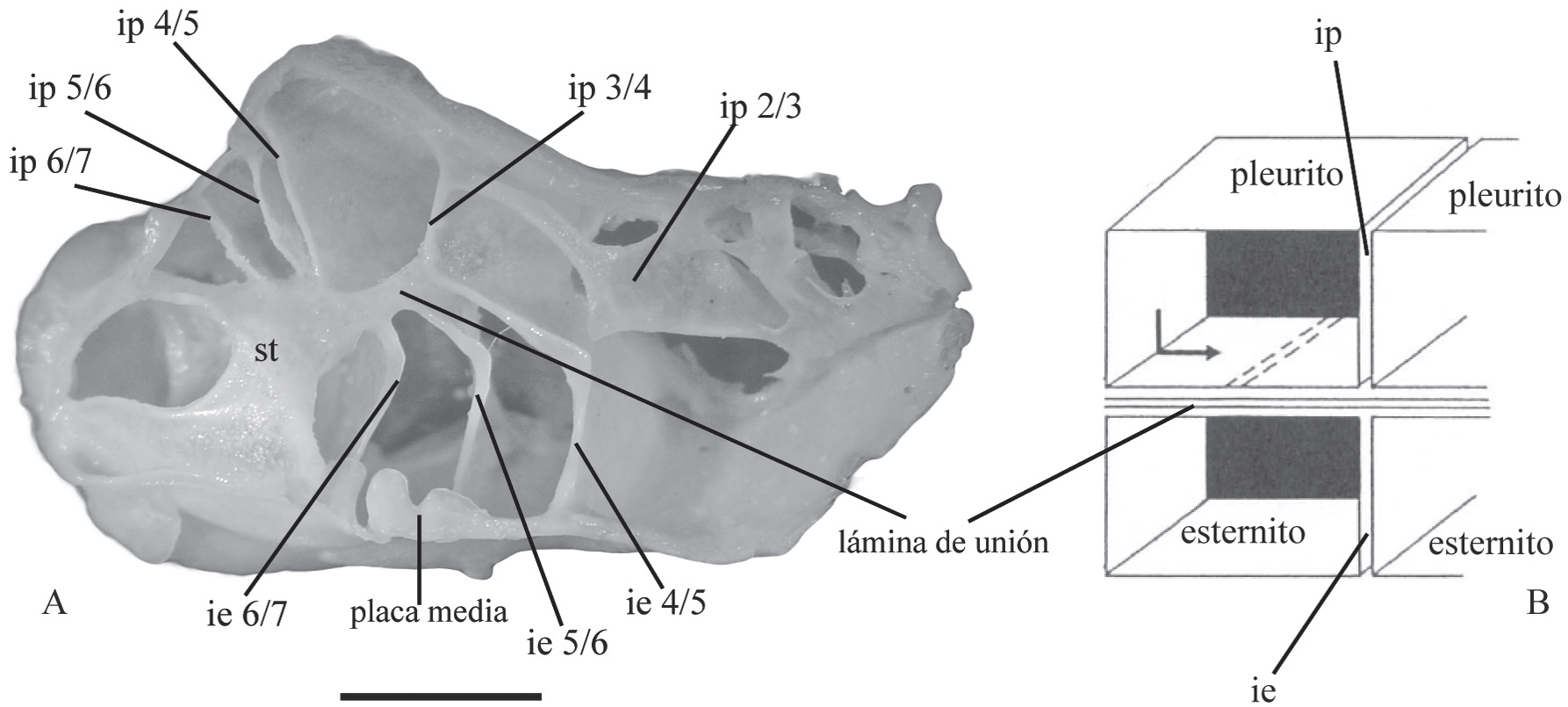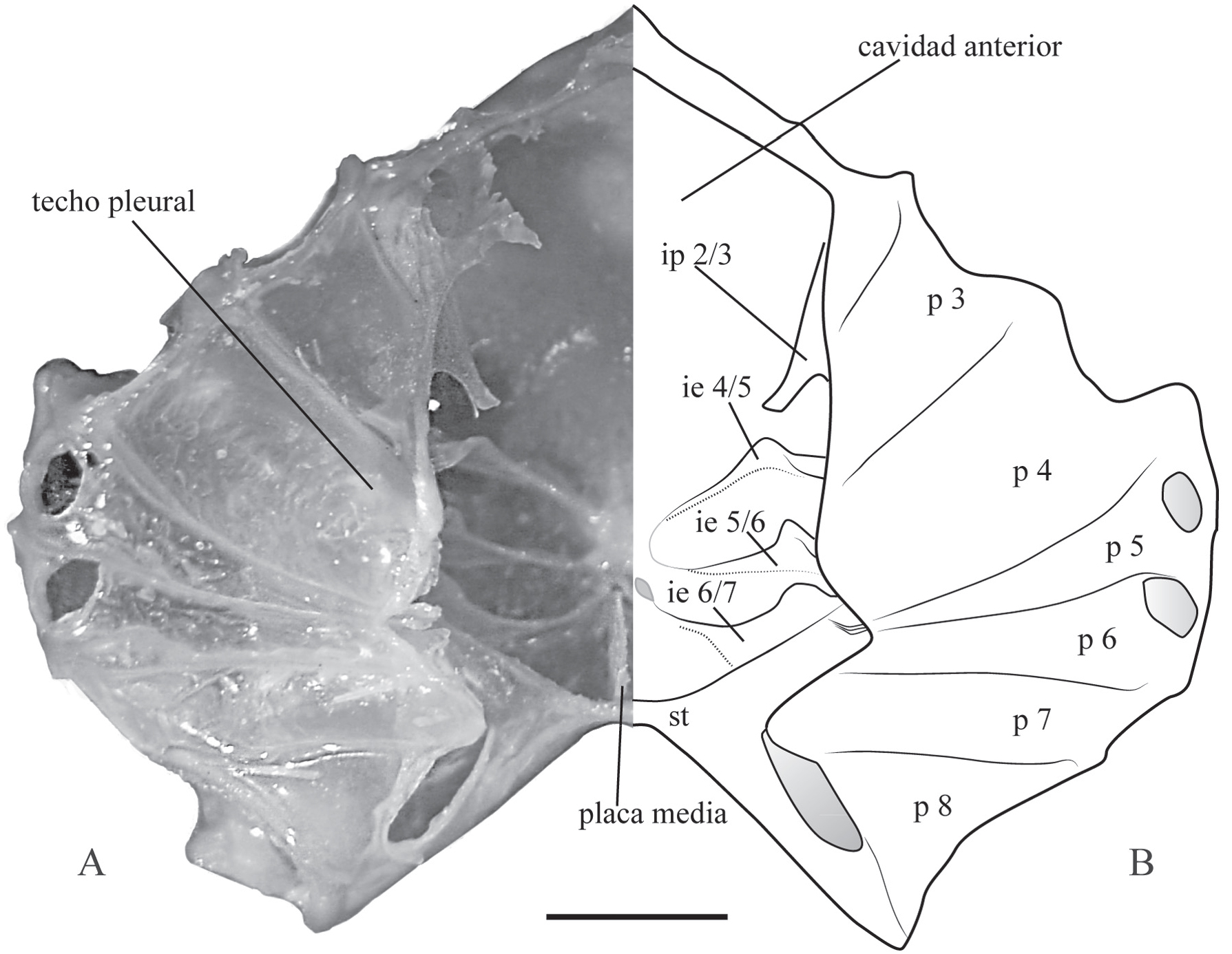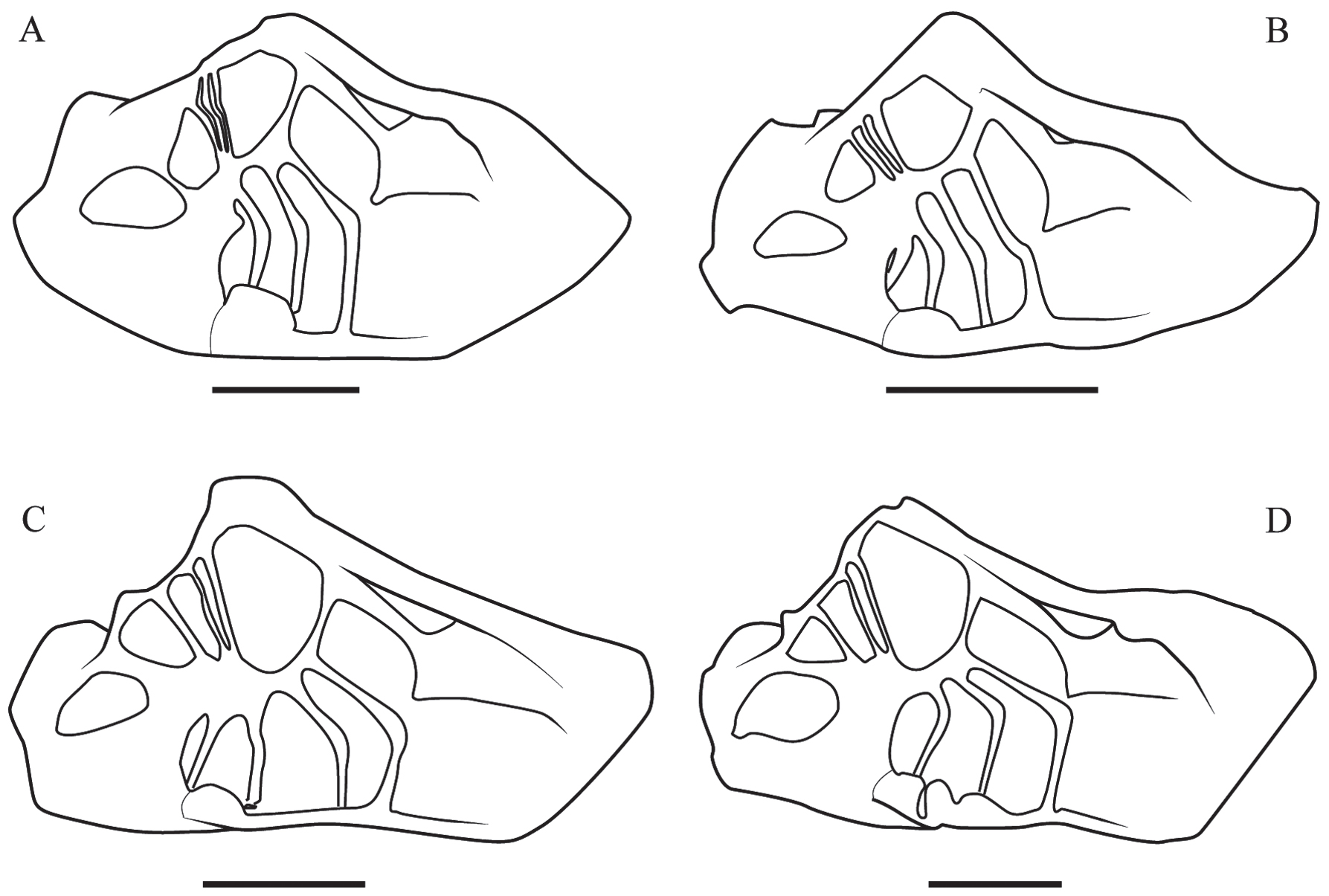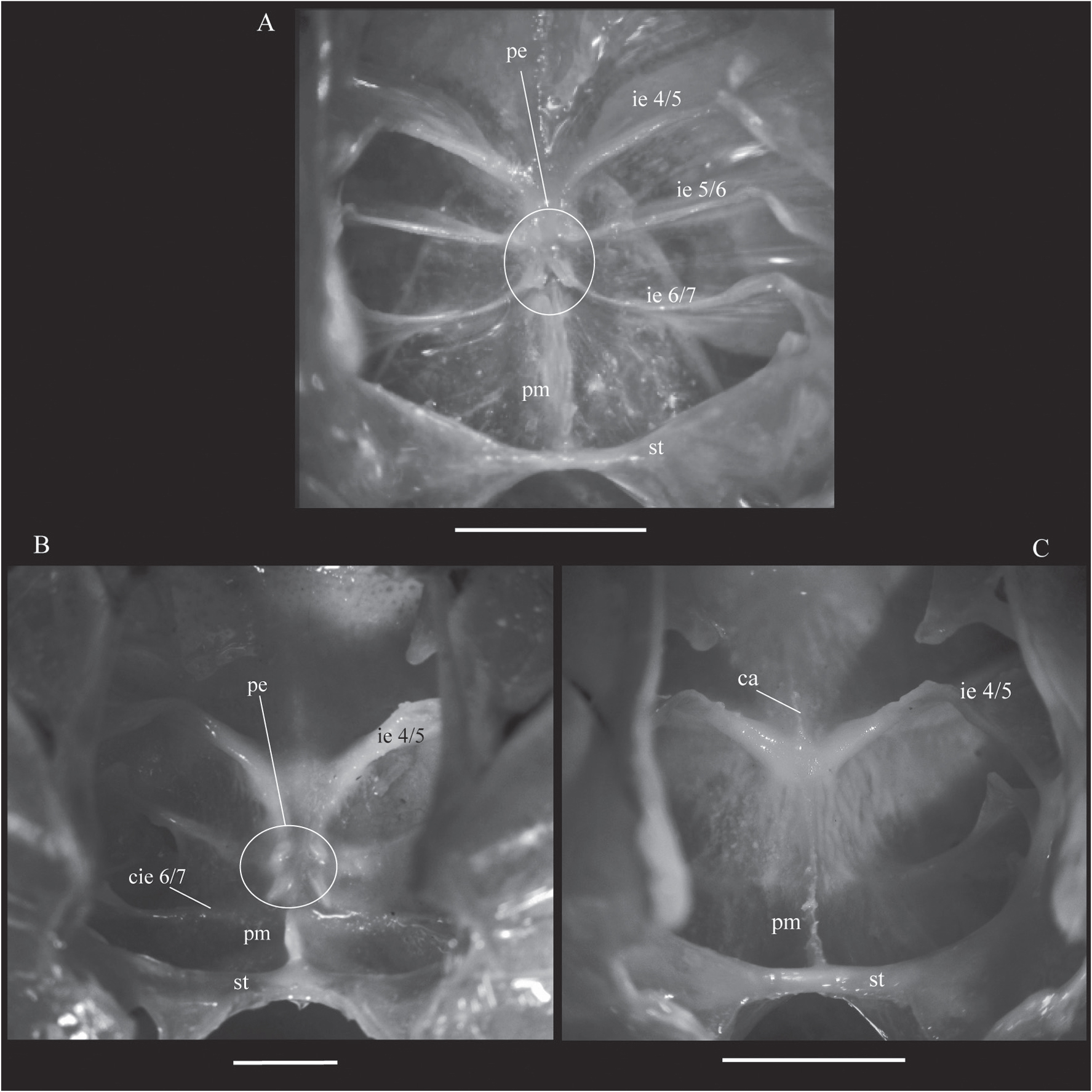FIGURA 1:
A-B. Corte sagital del esqueleto axial de Dilocarcinus pagei Stimpson, 1861, macho adulto, en vista mesial. A, fotografía del esqueleto axial. B, representación esquemática de la constitución de la lámina de unión (modificado de Secretan, 1998). Abreviaciones: ie, interesternito; ip, interpleurito; st, sella turcica reforzada. Escala, 5 mm.
FIGURA 2:
A-B. Esqueleto axial de Trichodactylus fluviatilis Latreille, 1828, macho adulto, en vista dorsal (caparazón removido). A, fotografía de la mitad izquierda. B, representación esquemática de "A". Abreviaciones: ie, interesternito; ip, interpelurito; p, pleurito; st, sella turcica reforzada. Escala, 5 mm.
FIGURA 3
A-D. Representación esquemática del esqueleto axial en vista dorsal (caparazón removido). A,
Trichodactylus fluviatilis Latreille, 1828, macho adulto (Trichodactylinae). B,
Avotrichodactylus constrictus (Pearse, 1911), macho adulto (Trichodactylinae). C,
Valdivia serrata White, 1847, macho adulto (Valdiviini). D,
Bottiella medemi (Smalley & Rodríguez, 1972) macho adulto (Dilocarcinini). Note la conformación del techo pleural, la forma de la sella turcica y el grado de interrupción de los interesternitos. Escalas, 5 mm.
FIGURA 4
A-D. Representación esquemática del esqueleto axial en vista sagital. A,
Trichodactylus fluviatilis Latreille, 1828, macho adulto (Trichodactylinae). B,
Avotrichodactylus constrictus (Pearse, 1911), macho adulto (Trichodactylinae). C,
Valdivia serrata White, 1847, macho adulto (Valdiviini). D,
Dilocarcinus pagei Stimpson, 1861, macho adulto, (Dilocarcinini). Note los lugares de convergencia de los interesternitos e interpeluritos en la lámina de unión, la prolongación y continuidade de la placa mediana, y la extención vertical de los intesternitos. Escalas, 5 mm.
FIGURA 5
A-C. Fotografía del esternón torácico, vista desde el interior del esqueleto axial. A,
Trichodactylus fluviatilis Latreille, 1828, macho adulto (Trichodactylinae). B,
Zilchiopsis collastinensis (Pretzmann, 1968Pretzmann, G. 1968. Die Familie Trichodactylidae (Milne Edwards 1853) Smith 1870 (Vorläufige Mitteilung). Entomologisches Nachrichtenblatt, 15(7-8):70-76.), macho adulto, (Valdiviini). C,
Dilocarcinus septemdentatus (Herbst, 1783), macho adulto, (Dilocarcinini). Note el grado de interrupción de los interesternitos, la extensión de las cristas de los interesternitos, las proeminecias externales y la configuración dorsal de la sella turcica. Abreviaciones: ca, cresta anterior; cie, cresta interesternito; ie, interesternito; pe, prominencias esternales; pm, placa media; st, sella turcica reforzada. Escalas, 5 mm.
FIGURA 6
A-D. Fotografía del corte sagital del esqueleto axial mostrando la lámina de unión en vista antero-mesial. A,
Trichodactylus fluviatilis Latreille, 1828, macho adulto (Trichodactylinae). B,
Avotrichodactylus constrictus (Pearse, 1911), macho adulto (Trichodactylinae). C,
Zilchiopsis collastinensis (Pretzmann, 1968Pretzmann, G. 1968. Die Familie Trichodactylidae (Milne Edwards 1853) Smith 1870 (Vorläufige Mitteilung). Entomologisches Nachrichtenblatt, 15(7-8):70-76.), macho adulto, (Valdiviini). D,
Dilocarcinus Stimpson, 1861, macho adulto, (Dilocarcinini). Note los lugares de convergencia de los interesternitos e interpeluritos en la lámina de unión y la unión mesial del interesternito 7/8 a la lámina de unión. Abreviaciones: ie, interesternito; ip, interpelurito; lu, lámina de unión; st, sella turcica reforzada. Escalas, 2 mm.

 Thumbnail
Thumbnail
 Thumbnail
Thumbnail
 Thumbnail
Thumbnail
 Thumbnail
Thumbnail
 Thumbnail
Thumbnail
 Thumbnail
Thumbnail





